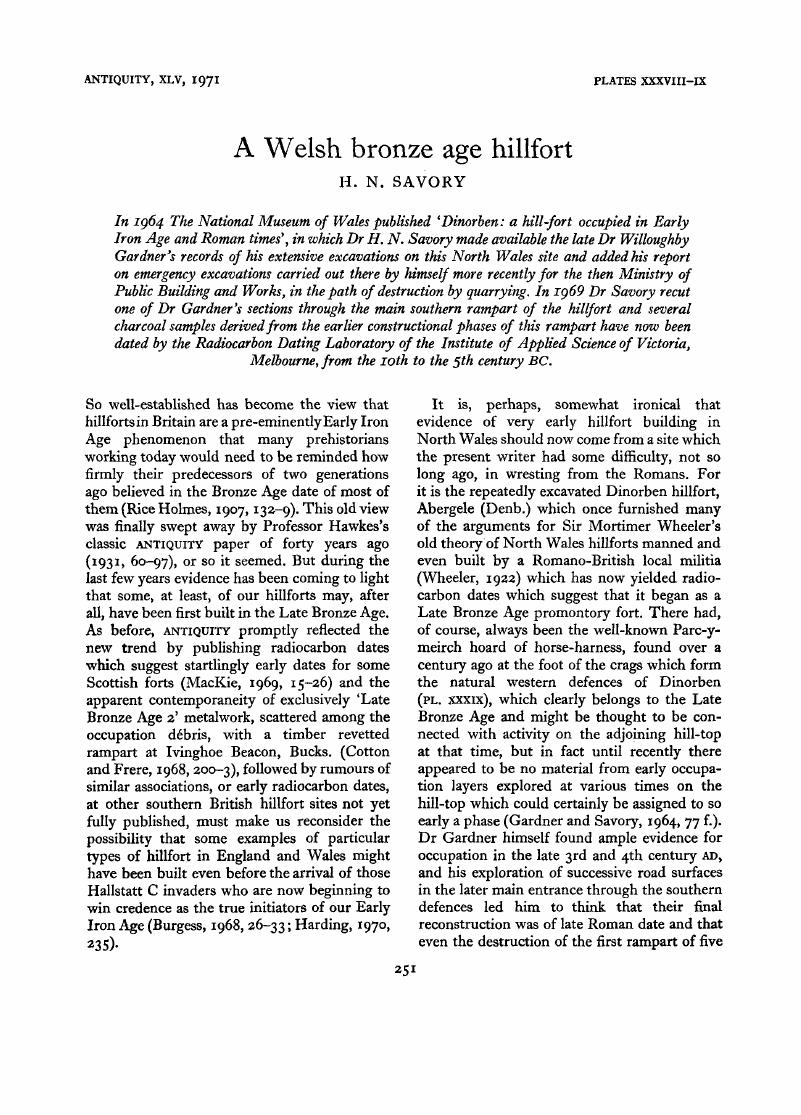Article contents
A Welsh bronze age hillfort
Published online by Cambridge University Press: 02 January 2015
Abstract

- Type
- Article
- Information
- Copyright
- Copyright © Antiquity Publications Ltd 1971
Footnotes
In 1964 The National Museum of Wales published ‘Dinorben: a hill-fort occupied in Early Iron Age and Roman times’, in which Dr H. N. Savory made available the late Dr Willoughby Gardner's records of his extensive excavations on this North Wales site and added his report on emergency excavations carried out there by himself more recently for the then Ministry of Public Building and Works, in the path of destruction by quarrying. In 1969 Dr Savory recut one of Dr Gardner's sections through the main southern rampart of the hillfort and several charcoal samples derived from the earlier constrctional phases of this rampart have now been dated by the Radiocarbon Dating Laboratory of the Institute of Applied Science of Victoria, Melbourne, from the 10th to the 5th century BC.
References
- 2
- Cited by


